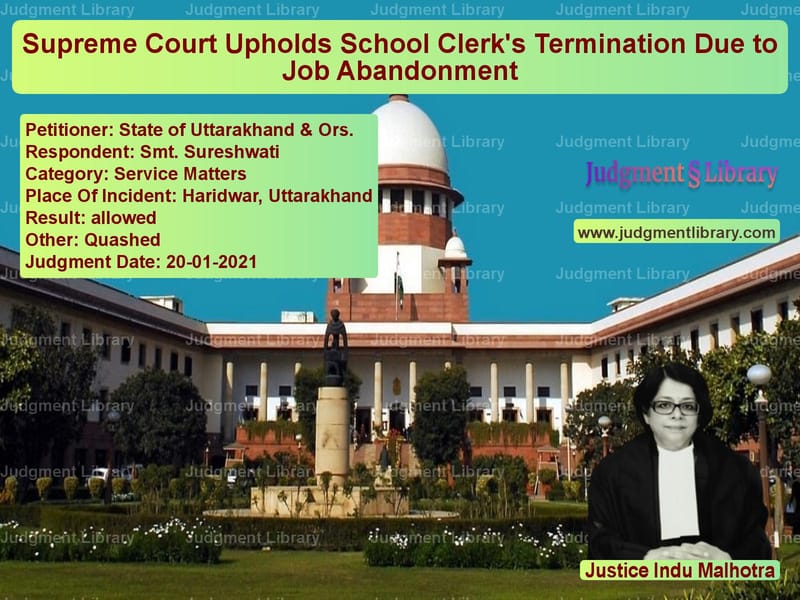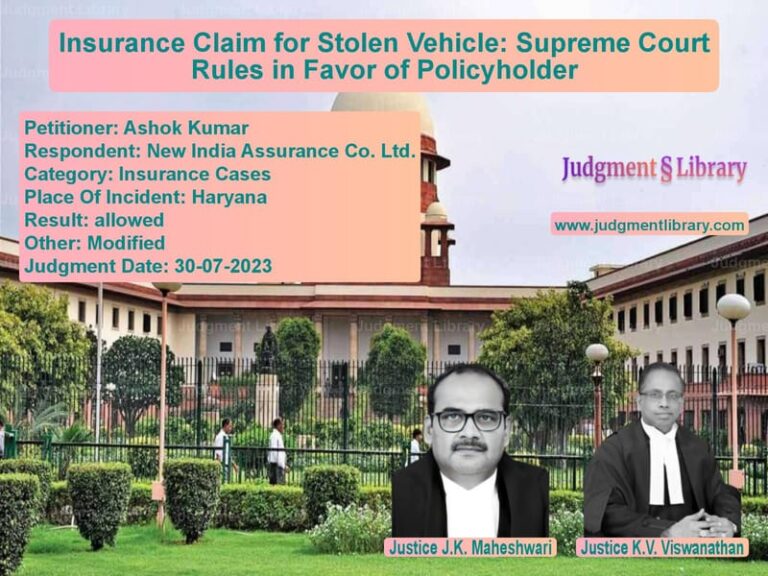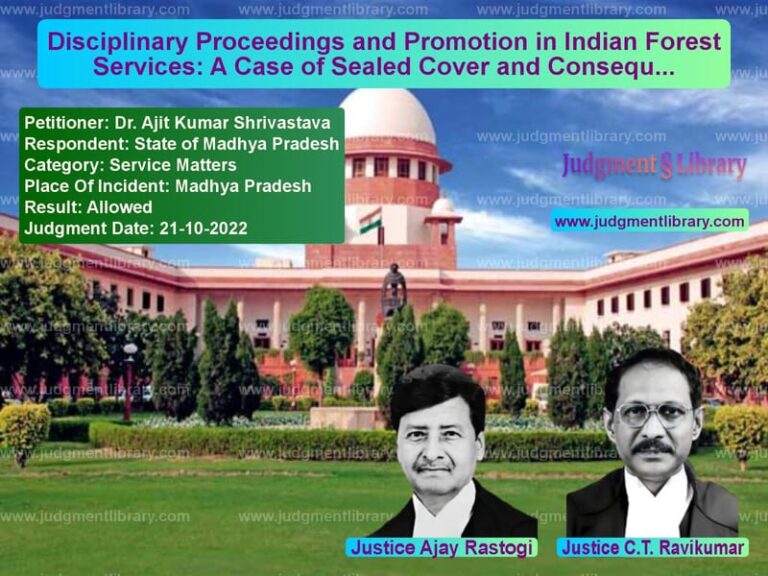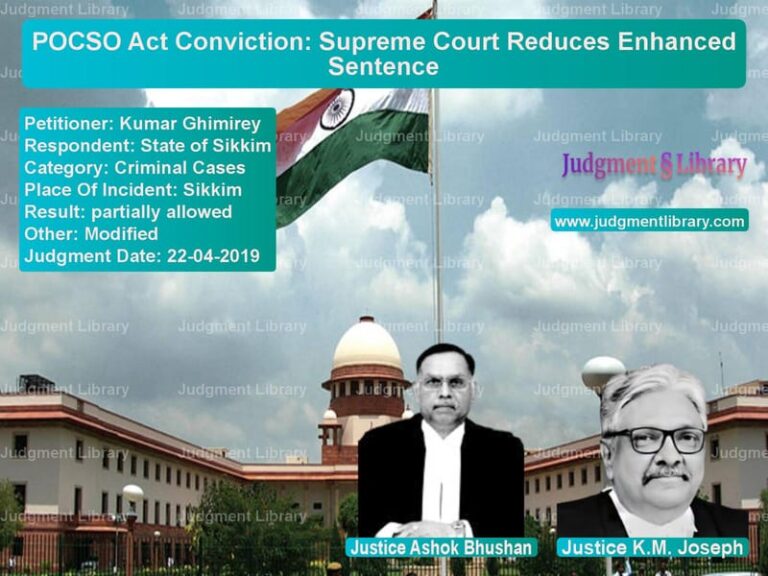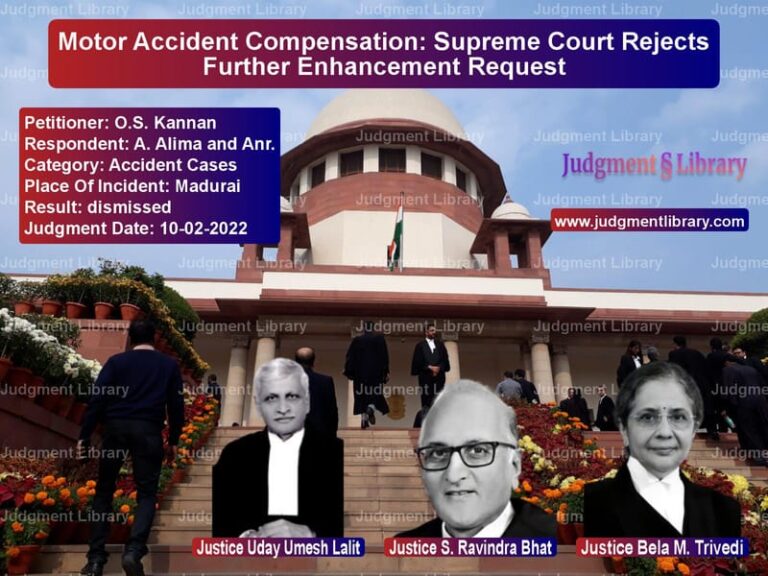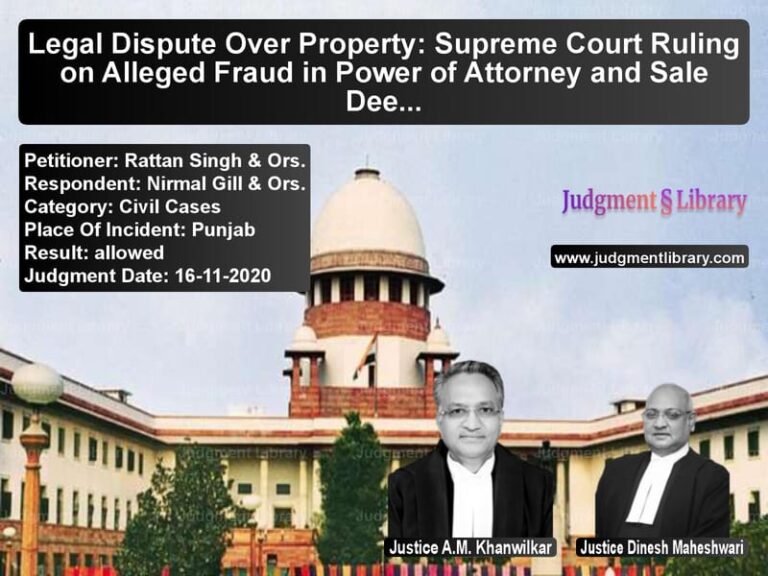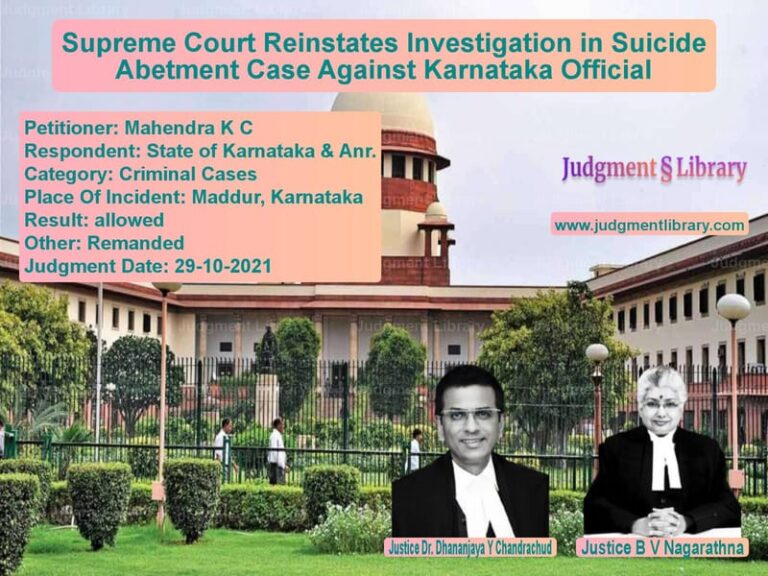Supreme Court Upholds School Clerk’s Termination Due to Job Abandonment
The Supreme Court of India, in the case of State of Uttarakhand & Ors. vs. Smt. Sureshwati, ruled on the legality of a school clerk’s termination after years of absence. The Court overturned a High Court order that had directed reinstatement, reaffirming that an employee who voluntarily abandons their job cannot later claim wrongful termination.
Background of the Case
The dispute revolved around Smt. Sureshwati, who was engaged as an Assistant Teacher in Jai Bharat Junior High School, Haridwar, from July 1993 to May 1994. She later worked as a clerk from July 1994. The school was a private institution at the time. On 25th March 1996, the District Basic Education Officer approved her appointment.
In May 2005, the school began receiving government grants, bringing it under the purview of the Uttaranchal School Education Act, 2006. However, by then, Sureshwati had already left the school. According to the state, she abandoned her job in July 1997 after getting married and moving to Dehradun.
Dispute and Legal Proceedings
- 2006: After nine years, Sureshwati filed a complaint alleging illegal termination.
- 2006-2008: An inquiry found that she had tampered with employment records and had been absent since 1997.
- 2010: The Labour Court ruled in her favor, directing reinstatement.
- 2015: The High Court of Uttarakhand remanded the case for fresh consideration.
- 2016: The Labour Court, upon rehearing, ruled against her, holding that she had abandoned her job voluntarily.
- 2019: The High Court reversed this decision and reinstated her.
- 2021: The Supreme Court overturned the High Court’s ruling.
Petitioner’s (State of Uttarakhand) Arguments
- The respondent left her job in 1997 and did not challenge her alleged termination until 2006, after the school became a government-aided institution.
- The school had replaced her with another clerk in 2002, showing no expectation of her return.
- She did not provide any evidence proving she worked continuously until 2006.
- Her employment was initially illegal, as her parents were in the school’s management when she was appointed.
- Since she had abandoned her job, there was no question of illegal termination.
Respondent’s (Smt. Sureshwati) Arguments
- She worked continuously until 8th March 2006 and was illegally terminated without a hearing.
- She had completed more than 240 days of service in the preceding year, qualifying her for reinstatement.
- The school management violated employment laws by dismissing her without due process.
- The Labour Court’s earlier ruling in her favor should be upheld.
Supreme Court’s Observations
The Supreme Court scrutinized the evidence and found that:
- She had been absent since 1997, without any leave applications or records showing her continued employment.
- The school engaged another clerk in 2002, indicating that she had abandoned her position.
- She failed to produce attendance records or salary slips to prove she worked until 2006.
- The inquiry found that her employment records had been tampered with, creating doubts about her claims.
“The onus was entirely upon the employee to prove that she had worked continuously for 240 days in the twelve months preceding the date of her alleged termination, which she failed to discharge.”
Final Judgment
- The Supreme Court set aside the High Court’s order.
- The Labour Court’s decision, which found that she had abandoned her job, was reinstated.
- Her claim for reinstatement was rejected.
- The Court emphasized that employees who voluntarily abandon their jobs cannot later claim wrongful termination.
Implications of the Judgment
This ruling has major implications for employment law:
- Burden of Proof on Employees: Employees claiming illegal termination must provide substantial evidence.
- Time Bar in Employment Disputes: Delays in raising grievances weaken the employee’s case.
- Government-Aided School Regulations: Employees in private schools that later receive government aid must establish continuous service to claim benefits.
- Clear Employer Documentation: Employers should maintain accurate records to defend against wrongful termination claims.
Conclusion
The Supreme Court’s ruling in State of Uttarakhand & Ors. vs. Smt. Sureshwati affirms the principle that employees cannot claim wrongful termination after voluntarily leaving their jobs. The decision reinforces the necessity of presenting clear and timely evidence in employment disputes. The ruling serves as an important precedent in cases where job abandonment is alleged.
Petitioner Name: State of Uttarakhand & Ors..Respondent Name: Smt. Sureshwati.Judgment By: Justice Indu Malhotra.Place Of Incident: Haridwar, Uttarakhand.Judgment Date: 20-01-2021.
Don’t miss out on the full details! Download the complete judgment in PDF format below and gain valuable insights instantly!
Download Judgment: state-of-uttarakhand-vs-smt.-sureshwati-supreme-court-of-india-judgment-dated-20-01-2021.pdf
Directly Download Judgment: Directly download this Judgment
See all petitions in Employment Disputes
See all petitions in Public Sector Employees
See all petitions in Termination Cases
See all petitions in Judgment by Indu Malhotra
See all petitions in allowed
See all petitions in Quashed
See all petitions in supreme court of India judgments January 2021
See all petitions in 2021 judgments
See all posts in Service Matters Category
See all allowed petitions in Service Matters Category
See all Dismissed petitions in Service Matters Category
See all partially allowed petitions in Service Matters Category

